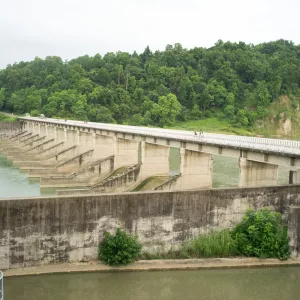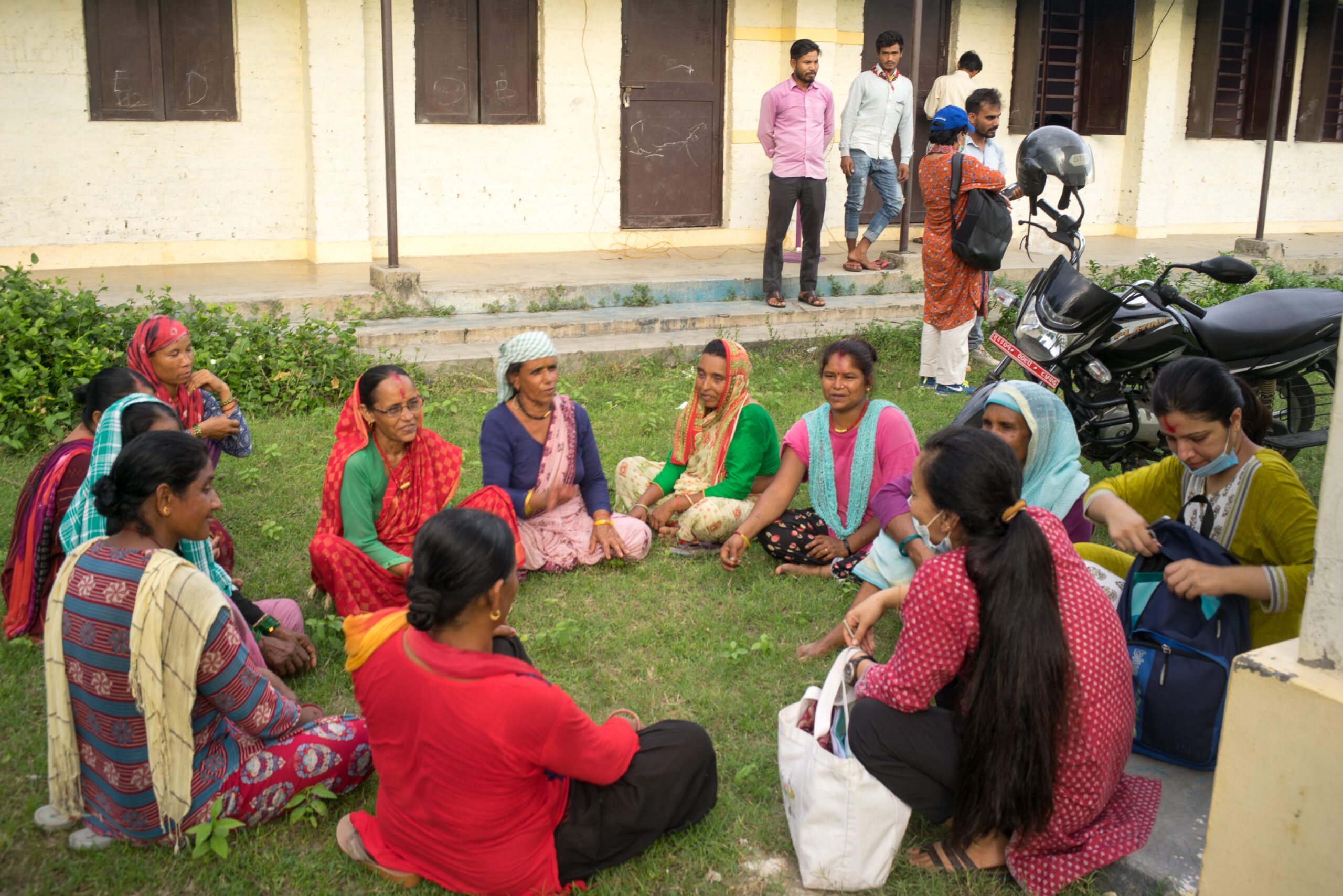Reinvigorating food production in Nepal: strengthening the irrigation–agriculture nexus
By Manju Adhikari, Nirman Shrestha, Krishna Kumar Mishra, Sunil Kumar Singh and Santosh Nepal Nepal is increasingly dependent on food imports, which rose by about 60% between 2015 and 2020, according to foreign trade statistics. This trend threatens Nepal’s agricultural future and undermines food security – an undesirable outcome for a country already classified as having a ‘moderate level of

Reinvigorating food production in Nepal: strengthening the irrigation–agriculture nexus
By Manju Adhikari, Nirman Shrestha, Krishna Kumar Mishra, Sunil Kumar Singh and Santosh Nepal
Nepal is increasingly dependent on food imports, which rose by about 60% between 2015 and 2020, according to foreign trade statistics. This trend threatens Nepal’s agricultural future and undermines food security – an undesirable outcome for a country already classified as having a ‘moderate level of hunger’ in the 2022 Global Hunger Index.
So why is agricultural development slow in Nepal – a country where rainfall is abundant, and there are plenty of irrigation opportunities in lowland areas of the Indo-Gangetic Plain? Several factors are to blame: a water deficit resulting in dry land, unplanned urbanization, fragmentation of arable land, and a lack of proper irrigation infrastructure, fertilizers and seeds. In addition, the country’s challenging business environment has led around 14% of the total youth population to move abroad for employment and education, depleting the available workforce.
To better understand the water–irrigation–agriculture linkages, and the factors holding back agricultural development, the CGIAR Initiative on NEXUS Gains commissioned a project investigating three irrigation projects (including two National Pride Projects) in Western Nepal. The main objective of the visit was to understand how irrigation water is used to improve agriculture productivity, and the challenges facing water user associations (WUAs) and irrigation systems.

Visiting the projects
In August 2022, a team of 14 agriculture and water resource specialists (nine men and five women) was formed from the International Water Management Institute (IWMI) in collaboration with Nepal’s Department of Water Resources and Irrigation (DWRI), Department of Agriculture (DOA), National Agriculture Research Council (NARC), Water Resources Research and Development Center, and Water and Energy Commission Secretariat.
The team visited three irrigation projects: the Mahakali Irrigation Project (MIP) – Stage I and Stage II, covering 11,600 hectares (ha); the Rani Jamara Irrigation Project (RJKIP), covering 38,300 ha; and the Babai Irrigation Project (BIP), covering 36,000 ha. These projects are located in Kanchanpur, Kailali and Bardia districts respectively.
Investigating the agriculture–irrigation nexus
In analyzing information and data from the project visits, we observed that out of the three project sites visited, only RJKIP showed strong linkages between the irrigation and agriculture sectors, which enhanced agricultural productivity through a dedicated Agricultural Component Implementation Unit (ACIU); the other two sites (BIP and MIP) lacked coordination and regular interactions between the two. Overall, the field visits were an eye opener, demonstrating that irrigation and other agricultural practices need to integrate to improve agricultural productivity.
We identified that providing year-round irrigation was the main challenge in most irrigation schemes especially during the winter and spring seasons when the rainfall is very low. In BIP, for example, only 70% of the eastern command area was irrigated during the winter (dry) season – as the river flow drops to 5 cubic meters per second (m3/s), compared to 11,000 m3/s during peak flood time.
In MIP, there were few irrigation facilities, and these had a weak link with wider agricultural practice, or no link at all. One farmer at MIP pointed out that, due to a lack of coordination between agricultural and irrigation officials, they do not get the support they need.
Other farmers observed that, “Timely and sufficient water distribution is necessary to increase agricultural productivity, but other factors like fertilizers, seeds, agri-mechanization, and technical support to the farmers also impact the production”, and that “Even though our system lacks year-round irrigation, farmers still hesitate to accept modern tools and technology, which is crucial to improve farm productivity.”
In RJKIP, farmers performed well in agriculture-specific components of irrigation plans due to interventions by the project’s ACIU. As explained in a World Bank document, agricultural production at the head of the irrigation command area rose by 10%, and cropping intensity rose from 157% to 191%, during 2016 in RJKIP after ACIU interventions. We also observed that 566 households, including 163 women and 403 men, benefited from the RJKIP’s 2019/20 food crop area expansion initiative.
ACIU has aided farmers by subsidizing seed by 50%, herbicides, pesticides, micronutrients, plant protection tools and improved technology by 75%, and farm machinery like power tillers, tractors, rice transplanters and wheat threshers by 50%. Successful cold storage facilities and a banana ripening center have also been in operation.
In 2022/23, farming subsidies were available (targeting single women farmers in particular). However, farmers do not know how they will sustain their farm activities once ACIU expires. One director of the irrigation project said, “There should be continued subsidies for farmers to sustain farm operations and agricultural components of irrigation projects to engage the WUA.”
A pressing concern expressed by farmers on all three project sites was the limited co-ordination between agricultural and irrigation officials; many farmers were keen to connect the two offices in order to bring about a collective, more integrated, impact. Other challenges and solutions for farmers in the three project sites are discussed further in another blog.
The way forward
Our analysis of key irrigation projects in Western Nepal demonstrates that government entities responsible for irrigation and agriculture should collaborate to tackle water and food issues, prioritizing the long-term sustainability of state-funded irrigation and agricultural projects. More specifically, DWRI, DOA and NARC should all work together, with the active involvement of WUAs, to provide timely agro-advisory services and agricultural insurance.
Government-led services can enhance agricultural productivity through the introduction of new improved seeds, fertilizers and irrigation schedules, as recommended nationally. To win the faith of farmers, these new inputs should be coupled with crop insurance, first through piloted projects and later through a scaled-up program. Such a holistic approach can ensure that all farming needs are met, strengthening the irrigation–agriculture nexus and rebuilding the agricultural sector for a food-secure future in Nepal.
Manju Adhikari is a former consultant with the International Water Management Institute (IWMI) Nepal; Nirman Shrestha is a Researcher at IWMI; Krishna Kumar Mishra is a Senior Scientist at the Nepal Agricultural Research Council; Sunil Kumar Singh is an Agro-economist at the Department of Agriculture, Nepal; and Santosh Nepal is a Researcher at IWMI Nepal.
This work was carried out under the CGIAR Initiative on NEXUS Gains, which is grateful for the support of CGIAR Trust Fund contributors: www.cgiar.org/funders
Header image: Headwork of Babai Irrigation Project, Nepal. Photo by Nirman Shrestha/IWMI.

